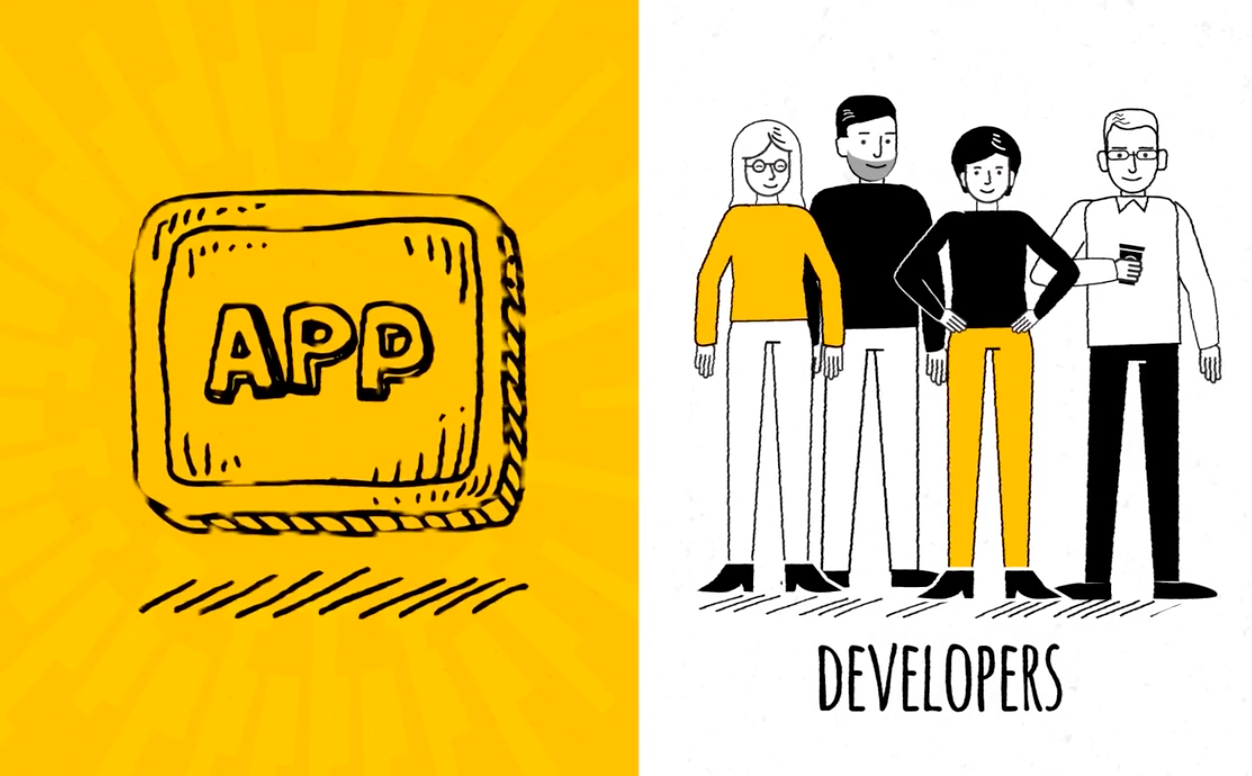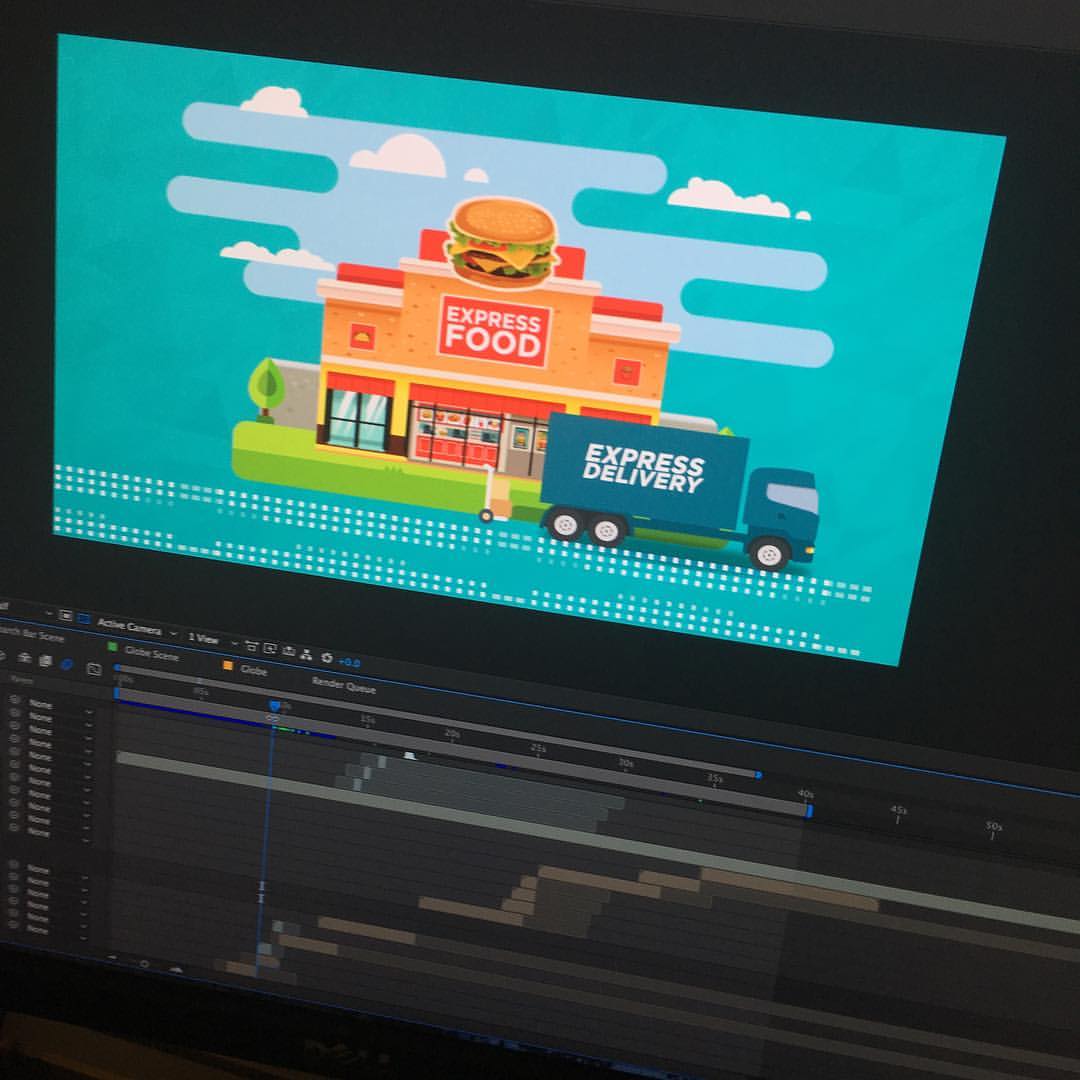Motion graphics are digital assets that move or create the impression of movement on a website or social media post. Motion graphics typically take static elements such as shapes, figures, or backgrounds and animate them for the purpose of enhancing storytelling, entertaining, branding or reinforcing information.
Software has vastly improved humankind’s abilities to relate stories and information in a variety of media. But telling the story of a certain type of software or technology can be a confusing challenge. When a product is intangible — created to support invisible infrastructure or move data to a cloud — how do you convince the world it’s necessary? And that it’s stronger, better, faster than the rest? How do you create a story for it?
One way is with creative use of motion graphics. Anthropomorphized animations. Simplified pen and ink drawings. Sometimes, with comics.
With 20 years of experience in writing and producing video advertising for tech companies ranging from startup to corporate, Garrett Bess, CEO of Two River Pictures, has created video marketing pieces for Motorola, OKI Data, Nutanix, SiriusXM and numerous other Silicon Valley companies. Here, he shares tips, success stories and methodology for creating art that tells — and sells — tech stories.
Please define the term “motion graphics.”
Motion graphics is really using computing software and processing power to create movement from otherwise static design elements like type, shapes, figures, backgrounds. In its richest form, it can move from flat movement of elements to dimensional to create a richer visual experience. Basically, anything you see move on a screen that isn’t live action has been designed and rendered as “motion graphics.”

What are the three most popular ways to utilize motion graphics for marketing a tech product or service?
Motion graphics can be utilized to:
-
More simply explain very complex technical concepts.
-
Provide a deeper dive into how a specific technology works.
-
Create visual imagery for sometimes very abstract product features and benefits.

What’s your process for coming up with a motion capture video concept for a tech client?
We actually don’t start with the “how” we are going to execute but rather with the story development. Then based on budget and what best serves the narrative and client’s needs, we look at whether to use motion graphics and if so, in what way (often with character animation as part of the design process).
How do you match an artist up with a new client?
Our designers have a variety of unique graphic design styles and expertise. Once a client’s creative approach is determined, we match designers to the project based on the chosen style direction outlined in the creative brief.
What is your cardinal rule for making a great explainer video?
First, we sort of dislike the term “explainer video,” as it suggests there is one common model or design approach to explain a client’s product or service to their audience. While I know the kinds of videos you are trying to reference, we typically engage with our clients from a blank sheet of paper approach. That means depending on the content length, communication requirements and audience, we determine what kind of story would best serve the client.
Once that’s determined and budgeted, then we develop a script and/or storyboard with three consistent goals:
-
Tell the story as compellingly as we can.
-
Tell it as differently as we can.
-
Never ever be boring or just “explaining.” We are in the entertainment business, and even videos intended to inform an audience can do both!
Adallom – Explainer from Two River Pictures on Vimeo.
Does a client need a scriptwriter in addition to graphic artists to create a motion graphics video? Or can the client provide the key points for the artist to create a script?
Our Creative Director is a scriptwriter who comes from the world of commercial and long-form writing but has also long worked as a creative director in the tech industry. So we very much — probably against 70% of our video work — apply storytelling through a narrative but descriptive script that is written and then brought to life by our graphic artists and editors. We don’t always get the story (especially the technical details) right on the first pass, but our clients value the development of a video based on a detailed script that lays out the story and key points they want us to communicate.
Can motion graphics tell an emotional story?
To answer that, let me start with the fact that there’s a blurry line between “motion graphics” and “animation,” where they’re often thought of as separate video techniques. We see them as really an extension of each other — with animation enabling richer development of characters and their interaction with objects and environments to then “tell an emotional story” in ways that motion graphics by themselves cannot.
Again, our organic approach to video connecting is to first identify what does the product or service need to say — and then how should it say it. If emotion is something that would effectively tell that story, we will create scripts that attempt to do that through whatever techniques are best.
What’s your favorite recent motion graphics project, and why?
We created a series of motion graphics videos to introduce two new product offerings Calm and Xi, from our client Nutanix. I really like these, because they demonstrate how we were able to take complex information and present it in a clean and informative design style.



